Region: Latin America and the Caribbean
Honduras’ President Juan Orlando Hernández visits the southern Dry Corridor
.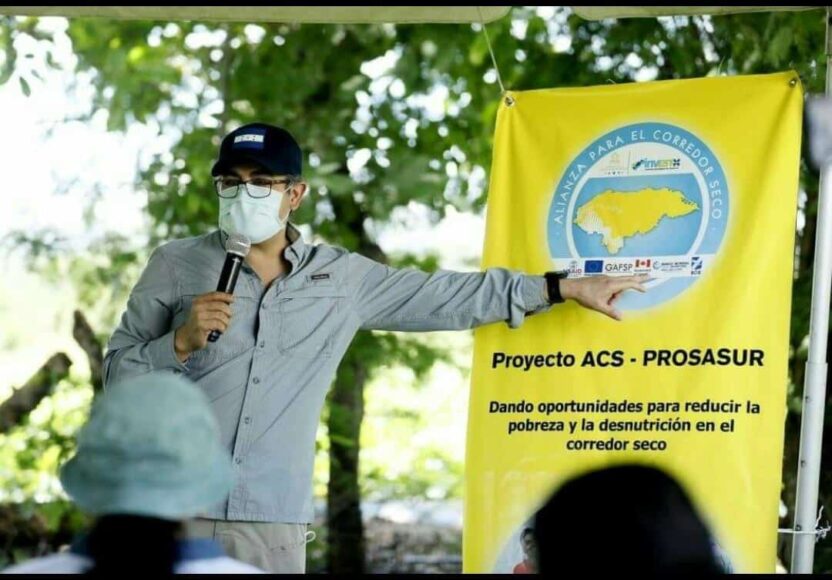
Honduras President Juan Orlando Hernández visited the small community of Jacalito, in Namasigüe, Choluteca. He was there to see how the Dry Corridor Alliance is supporting smallholder farmers growing in one of the most climate-fragile regions in the world.
“We are visiting the whole countryside to see successful stories like this,” said President Hernández, addressing the group of families, project team members and other officials gathered in Jacalito on Sept. 10.
Funded by both the World Bank and the Honduras Strategic Investment Office (INVEST-H), ACS-PROSASUR is part of the broader Dry Corridor Alliance project. The project addresses water scarcity, hygiene, child under-nutrition and rural livelihoods, aiming to lift 50,000 families out of extreme poverty by improving growing practices, among other techniques. Creative implements programs in 12 municipalities in the departments of Choluteca y El Paraíso, working with 6,000 families.

Jacalito is home to 22 of those families identified by ACS-PROSASUR. The project supplied them with five rainwater storage tanks, as well as drip irrigation systems and training on agricultural best practices. Drip irrigation, which involves using long hoses called drip tape punctured with holes that line up closely with the seedlings, reduces water use by at least 30 percent.
Representing these families at the president’s visit, farmer and community leader Ubence Quiñónez testified to the project’s effective farming methods and investment in their land.
“This project is a dream made reality,” said Quiñónez, addressing President Hernández and José Leva Bulnes, president of the intervening board of INVEST-H and an engineer. “We received water storage tanks, irrigation, tools, fertilizer and insecticides that guarantee we can plant at all times of the year.”
Quiñónez and four other families grow corn, beans, pumpkin and melons on the plot of land the group visited. The president saw firsthand how the water collection and storage tanks offset the risks posed by increasingly erratic rains in the wet season and more intense dry spells. Storing water to irrigate crops during droughts, the water tanks combined with the installation of drip irrigation systems give families stability during the planting and harvesting periods and prevent crops from dying.
Quiñónez said that harsher dry seasons no longer devastate their yields.
“Before, we would plant and then lose our harvests in the winter (dry season),” said Quiñónez. “But now with the irrigation system and other technologies we’re using, we have the certainty that we won’t lose everything in the winter.”
In Quiñónez’ plot, he and the other families can now harvest up to three times per year, whereas before the drip irrigation systems were installed, he’d be lucky to have two harvests. Innovations like these and improved practices can’t solve every problem Mother Nature may throw at them, but small holder farmers’ resiliency and profitability can be drastically improved.
With these techniques, as well as environmentally friendly fertilizers and better seeds, producers can go from growing for subsistence to commercializing their excess.
“The president and other representatives saw that it doesn’t take a huge investment to raise the standards of living of small holder farmers and make their work sustainable,” said Jorge Lainez, ACS-PROSASUR’s Chief of Party in Choluteca and Paraiso. “The president not only saw how important projects like ours are in enhancing production, nutrition, and income for farmers, but also in managing natural resources like water, the protection of water basins, and giving these producers technical assistance.
Eight of the families involved in ACS-PROSASUR’s agricultural projects in Jacalito are led by women and single mothers, highlighting a major focus on the project.
ACS-PROSASUR has several programs designed to empower rural Honduran women, who often the go unrecognized even as the primary breadwinners of their families. The project offers business plan development trainings, women’s and childhood health classes, and support in starting community gardens led by women’s cooperatives.
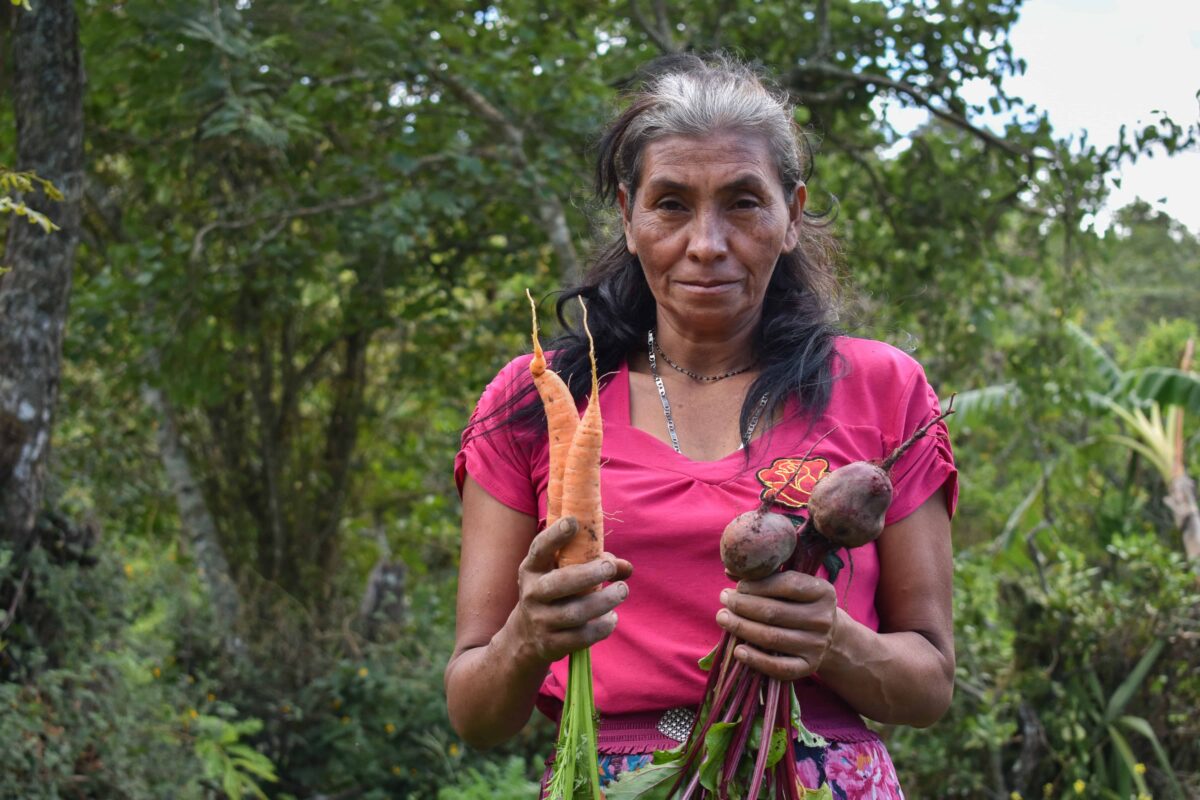
A quarter of humanity is facing a water crisis, with Central America coming out of a drought earlier this year. As climate change continues to alter weather patterns and raise temperatures, organizations will have to continue to adapt, focusing on developing environmentally sustainable methods to increase farmers’ resiliency in the region.
In March, President Hernández declared food security in the Dry Corridor a national priority for Honduras, given COVID-19’s disruption of value chains and supply lines compounded with the ever-present threat of climate change and water scarcity. But seeing projects like ACS-PROSASUR can encourage greater efforts to bridging agricultural resilience with economic growth that benefits families.
“The men and women who work in the fields need to be respected. They have a right to a better way of living,” said the president. “We want to give those who work in the fields a new way of living.”
Creative lanza el Centro de Migración y Estabilización Económica
.El Centro se enfocará primero en los cambios y las tendencias causados por el impacto económico del COVID-19
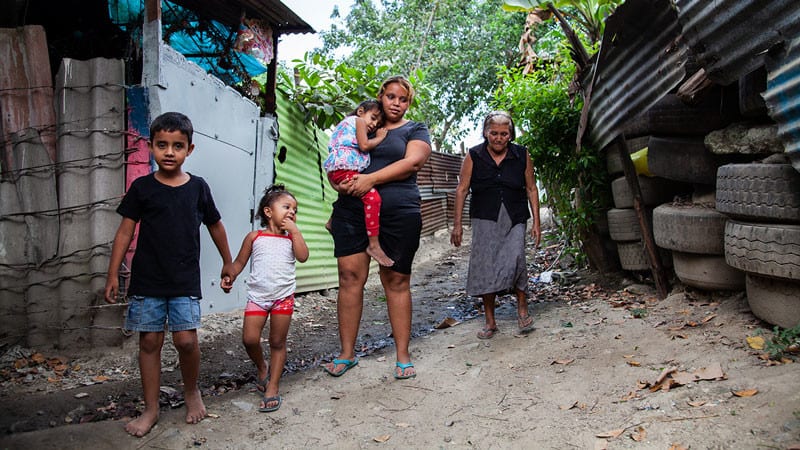
WASHINGTON, D.C. — Creative Associates International anuncia el lanzamiento de el Centro de Migración y Estabilización Económica. El propósito es que a través del Centro, Creative impulse la innovación y la capacidad de respuesta a programas ante este fenómeno global.
“Nuestro lanzamiento es oportuno, ya que la pandemia ha generado nuevas urgencias en torno a la migración”, dice el Presidente y Director Ejecutivo de Creative Leland Kruvant. “Este Centro combinará la rigurosidad técnica y el ingenio con la experiencia programática en el lugar, para abordar los desafíos apremiantes que tientan a los migrantes a arriesgarlo todo”.
El Centro se desarrolla con base en la investigación pionera de Creative 2019 sobre los factores causantes de migración en el Triángulo Norte de Centroamérica.
Pablo Maldonado, director operativo de Creative, dice que esas motivaciones para migrar al norte siguen tan presentes como nunca y en combinación con el efecto del COVID-19 podrán generar poderosos ímpetus de emigrar.
“La migración está conectada y se superpone con otros desafíos sistémicos que enfrenta Centroamérica, África occidental y otros lugares”, dice Maldonado. “Lamentablemente, los desafíos del desarrollo se cruzarán con las dificultades económicas del COVID-19 para crear la tormenta perfecta para la migración. Vamos a ver cambios en la migración y las tendencias, incluso los cambios de actitud, la migración interna y el movimiento a través de las fronteras, todo causado por la presión económica”.
El Centro de Migración y Estabilización Económica servirá como el núcleo líder en el tema, tanto como determinante y consecuencia de otros retos del desarrollo, tales como la inseguridad alimentaria, el desempleo y fragilidad de los estados.
El Centro continuará y se expandirá en previas actividades sobre migración de Creative, lo que incluye la recopilación metódica de datos para identificar los fenómenos y los propósitos de la migración, la desmitificación de creencias populares sobre la migración, que generalmente no están respaldadas por la evidencia y, en términos generales, la creación de programas que sirvan de insumo para la decisión de migrar, en su mayor parte en el campo económico, indica Maldonado.
“El Centro nos ayudará a permanecer a la vanguardia para comprender estos problemas que finalmente llevan a una mejor programación, enfocada localmente, a fin de mitigar las causas de la migración. Será un recurso muy necesario para un razonamiento fresco sobre la migración”, dice Maldonado.
Un líder racional y profesional dirigirá el Centro
El Centro de Migración y Estabilización Económica está liderado por el destacado experto Manuel Orozco, Ph.D., quien se incorporó a Creative después de más de 20 años en el Diálogo Interamericano en Washington, D.C.
Orozco, reconocido investigador y analista de flujos migratorios a nivel global, lo que incluye remesas, complementará la experiencia técnica de Creative en desarrollo económico, juventud, educación, gobierno, seguridad ciudadana y más, a fin de enriquecer la programación e identificar oportunidades para responder considerablemente al tema de migración.
Recientemente, el director sénior de Remesas y Desarrollo de Diálogo Interamericano, Orozco, también lideró el estudio a gran escala de Creative 2019 sobre los causantes de migración desde Honduras, El Salvador y Guatemala. Se pueden ver los detalles en: https://www.saliendo-adelante.com/
“Después de conocer el trabajo de alto calibre de Creative y su dedicación para comprender cabalmente las causas de la migración, me siento honrado por la oportunidad de unirme al equipo y ayudar a Creative a continuar siendo un líder en este tema global”, dice Orozco. “A través del Centro, espero brindar conocimientos valiosos para garantizar que los programas de Creative ayuden a mitigar las causas de migración”.
La necesidad de experiencia y liderazgo adicional sobre migración se hizo más urgente a raíz de la propagación del COVID-19 en todo el mundo; dejando tambaleante a comunidades ya frágiles de por si, y evidenciando un mayor impacto sobre los patrones migratorios para los años venideros.
“Sabemos que el COVID-19 tendrá un profundo efecto sobre la migración”, dice Maldonado. “Con la creación del Centro, podemos lograr este inminente desafío y servir mejor a las comunidades, así como a las familias que luchan con los efectos colaterales de la pandemia”.
Además de su nuevo rol en Creative, Orozco es asociado sénior en migraciones del Centro de Desarrollo Internacional de la Universidad de Harvard y asesor sénior en migraciones y remesas del Fondo Internacional de Desarrollo Agrícola. Él tiene un doctorado en ciencias políticas de la Universidad de Texas, en Austin, una maestría en administración pública y estudios latinoamericanos, y un título de bachiller en relaciones internacionales de la Universidad Nacional de Costa Rica.
ACERCA DE CREATIVE ASSOCIATES INTERNATIONAL
Creative Associates International trabaja con comunidades desatendidas compartiendo sus conocimientos y experiencia en educación, elecciones, crecimiento económico, gobierno y transiciones del conflicto a la paz.
Con sede en Washington, D.C., Creative tiene proyectos activos en casi 30 países. Desde 1977, ha trabajado en casi 90 países y en casi todos los continentes. Creative se compromete a generar soluciones sostenibles a largo plazo para problemas de desarrollo complejos y se le reconoce por su capacidad para trabajar de manera rápida, flexible y efectiva en entornos afectados por conflictos.
Creative ha crecido hasta convertirse en uno de los líderes entre los implementadores de proyectos de desarrollo global del sector privado de EE. UU. Creative es de propiedad y operación minoritaria.
Creative launches Center for Migration and Economic Stabilization
.Center to first focus on shifts and new trends caused by economic impacts of COVID-19

Haga clic aquí para leer en español.
WASHINGTON, D.C. — Creative Associates International is launching a specialized Center for Migration and Economic Stabilization to drive innovation and program responsiveness to this global phenomenon.
“Our launch is timely since the COVID pandemic has generated new urgencies around migration,” says Creative President and CEO Leland Kruvant. “This Center will combine technical rigor and ingenuity with Creative’s on-the-ground programmatic experience to address the pressing challenges that lure migrants into risking it all.”
The Center for Migration and Economic Stabilization builds on Creative’s 2019 groundbreaking research on the drivers of migration from Central America’s Northern Triangle.
Pablo Maldonado, Creative’s Chief Operating Officer, says those motivations to migrate North remain as present as ever and will combine with the effects of COVID-19 to generate a powerful impetus to migrate.
“Migration is connected and overlaps with other systemic challenges facing Central America, West Africa and elsewhere,” Maldonado says. “Unfortunately, long–standing development challenges will intersect with the economic hardship of COVID-19 to create a perfect storm for migration. We will see shifts in migration activity and trends, including changing attitudes, internal migration and relocations across borders all caused by the economic squeeze.”
The Center for Migration and Economic Stabilization will serve as a hub of thought leadership on the issue both as a cause and byproduct of other development challenges. The Center has a pointed focus on serving the underserved, those who are not typically touched by more traditional economic development, including youth, women and those working in informal economies.
The Center will continue and expand on Creative’s earlier migration pursuits, including methodical data gathering to track migration and its drivers, demystification of popular migration beliefs that are not supported by evidence and, more broadly, the creation of programs that are material to the decision to migrate — mostly in the economic arena, Maldonado says.
“The Center will help us stay at the forefront of understanding these issues and ultimately lead to better, locally focused programming to mitigate the causes of migration. It will be a much-needed resource for fresh thinking on migration,” Maldonado says.
Thought leader, practitioner to direct the Center
The Center for Migration and Economic Stabilization is led by noted expert Manuel Orozco, Ph.D., who joined Creative after more than 20 years at the Inter-American Dialogue in Washington, D.C.
Orozco, a recognized researcher and analyst of global migration flows, including remittances, will complement Creative’s technical expertise in economic growth, youth, education, governance, citizen security and more to enrich programming and identify opportunities to respond thoughtfully to migration.
Most recently Senior Director of Remittances and Development at the Inter-American Dialogue, Orozco also led Creative’s 2019 study into the drivers of migration from Honduras, El Salvador and Guatemala. Details may be seen at: https://www.saliendo-adelante.com/
“After getting to know Creative’s high-caliber work and its dedication to fully understanding the causes of migration, I’m honored by the opportunity to join the team and help Creative continue being a leader on this global topic,” Orozco says. “Through the Center, I hope to provide valuable insights to ensure that Creative’s programs help mitigate the causes of migration.”
The need for additional expertise and leadership on migration became more urgent as COVID-19 spread across the globe, leaving already fragile communities reeling and indicating a major impact on migration patterns for years to come.
“We know that COVID-19 will have a profound effect on migration,” Maldonado says. “With the creation of the Center for Migration and Economic Stabilization, we can meet this looming challenge and better serve communities and families grappling with the fallout of the pandemic.”
In addition to his new role at Creative, Orozco is a Senior Migration Fellow for the Center for International Development at Harvard University and Senior Migration and Remittances Advisor for the International Fund for Agricultural Development. He holds a Ph.D. in political science from the University of Texas at Austin, an M.A. in public administration and Latin American studies, and a B.A. in international relations from the National University of Costa Rica.
ABOUT CREATIVE ASSOCIATES INTERNATIONAL
Creative Associates International works with underserved communities by sharing expertise and experience in education, elections, economic growth, governance and transitions from conflict to peace.
Based in Washington, D.C., Creative has active projects in nearly 30 countries. Since 1977, it has worked in nearly 90 countries and on almost every continent. Recognized for its ability to work rapidly, flexibly and effectively in conflict-affected environments, Creative is committed to generating long-term sustainable solutions to complex development problems.
Creative has grown to become one of the leaders among the U.S. private sector implementers of global development projects. Creative is minority owned and operated.
Informing Regional Action on Youth Violence Prevention in the Caribbean
.An evidence-based, public health approach to preventing youth crime and violence is gaining traction in the Caribbean, where programs are increasingly addressing the underlying risk factors that lead young people to engage in delinquent behavior.
To expand upon this nascent trend, the U.S. Agency for International Development’s Community, Family and Youth Resilience (CFYR) Program hosted a Regional Learning Exchange over a series of four webinars between June 24 and July 16, 2020.
“The work that we do is only successful if a wide cross-section of stakeholders are committed and involved in bringing solutions to development challenges,” said Clinton White, USAID/ESC Regional Representative, setting the tone for the first webinar.
Over 100 youth leaders, policy makers, thought leaders and development partners, representing 17 Caribbean countries, the United States, Canada, and the United Kingdom, attended each session. Each webinar showcased evidence-based practices implemented in the Caribbean.
“Our hope is that the evidence we share will inform regional action on youth violence prevention policy and programming,” said CFYR’s Chief of Party Debra Wahlberg, opening the first session.
Youth leaders moderated key discussions, examining themes such as applying a public health approach to treat violence in vulnerable communities, building youth resilience, promoting alternatives to crime and violence, addressing unemployment, youth-led advocacy and juvenile justice reform. At the heart of the series was a desire to foster change on a regional scale and equip participants to advocate for better youth-centered policies and services.
Building youth resilience through counseling and psychosocial support
Youth in the Caribbean face steep challenges. Unemployment, lack of opportunity and poor education feed the cycles of violence plaguing the region. Panelists at the conference agreed that these hurdles require a multi-stakeholder, multi-faceted approach.
“In understanding the elements of resiliency, we have finally arrived at a place where we are realizing that changing crime and violence is not simply a matter of limiting guns coming into our country,” said panelist Dr. Kim Scott, Director of the Child Resiliency Programme in Jamaica.
Dr. Scott’s assertion underscores the importance of USAID’s public health approach to youth violence prevention. By treating violence like a public health issue, CFYR addresses key risk factors that lead youth to engage in violent behavior in 15 communities across St. Kitts and Nevis, Guyana and Saint Lucia.
Central to this approach is the Family Matters program. An assessment tool is used to identify youth at the highest risk of engaging in delinquent behavior and then to refer them and their families to Family Matters. Trained counselors spend one year working with ‘at-risk’ youth, strengthening the family unit and building protective factors to counteract harmful influences. To date, 73 percent of youth participants have experienced a reduction in risk factors, and 56 percent are no longer classified as ‘at-risk.’
“All family members have a voice, which is something that is empowering and validating even to the youngest members of the family,” said Michèle de la Coudray Blake, Director of Counseling in St. Kitts.
Through applying the public health approach and working with families in geographic locations that account for most of the crime and violence within USAID/CFYR’s focus countries, the positive changes achieved are expected to have a significant impact on breaking wider, endemic cycles of violence. The governments of Guyana and St. Kitts and Nevis have adopted the Family Matters program, independently sustaining the program’s funding and expanding services to new communities.
The USAID/OECS Juvenile Justice Reform Program (JJRP) presented an effective Aggression Replacement Training (ART) intervention that also experienced success involving family and other support systems in individual treatment plans. Other practitioners at the conference echoed the positive impact of counseling, whether cognitive behavioral therapy or trauma-focused counseling, when integrated in violence prevention and youth development programs.
“If a 10-year-old child has a new vision of what his or her life can be, she can break that cycle of violence,” said Dr. Scott.
USAID’s Agency Youth Coordinator Michael McCabe explained that increasing evidence supports the idea that it is essential to address the needs of youth at the intersections of mental health and employability, psycho-social development and education. Programs that incorporate these services often “exceed outcomes in building youth resiliency,” he said.
Positive alternatives to crime and violence and juvenile justice reform
McCabe also emphasized that in youth development work, knowledge and skills-building should be driven by the availability of opportunities in the local context. Without an outlet for youth’s enhanced skills and efficacy, programs can have an adverse effect on development.
“Always start with the opportunities. What is it I want young people to do and how can I connect them to that? Then, what skills and how can we help them develop those skills?” he said.
In Saint Lucia, CFYR facilitated a Hospitality Services Training program, with 74 percent of graduates completing internships in the hospitality industry, receiving international certification, and gaining employment through partnerships with employers. Of the nearly 700 youth aged 16-29 who completed workforce development programs that included life skills training in Saint Lucia and Guyana, over 400 secured new employment.
CFYR also offered after school programs, providing kids an alternate pathway to growth and a safe space to play and learn skills. These programs had a high retention rate and teachers reported a noticeable difference in students’ behavior and discipline after going through the program.
A major area of concern was also juvenile justice reform and the broader conditions of incarceration in the region.
“Ninety percent of inmates are going to return to the communities in the next 10 years, so we have to prepare our communities to receive them and we have to begin this process early,” said Tavarrie Smith, attorney and founder of Project Youth Justice.
In this area, CFYR developed and updated 21 administrative and diagnostic tools to support rehabilitation and reintegration of youth in conflict with the law in Guyana.
Youth-led peace action and advocacy
The learning exchange included extensive discussion on enhancing youth access, participation and engagement in decision-making and development. McCabe explained how Positive Youth Development approaches not only empower young people to reach their full potential through building skills, assets and competencies, but also through fostering systemic changes that promote their inclusion.
In 2018, youth from across the Caribbean region captured their violence prevention priorities in the Caribbean Youth Advocacy & Action Agenda on Violence Prevention (AAA), which was adopted by the regional policy making body CARICOM in early 2019. Turning paper into action, USAID/CFYR developed the AAA Toolkit and online AAA Advocacy course, which is equipping 70 trainees to create a culture of peace.
Dr. Quacy Grant, President of the Guyana National Youth Council and recent AAA Advocacy course graduate, spoke on the connection between youth participation in the electoral process and reducing violence around elections.
He led a voter education campaign in Guyana called InkItUp!, funded by USAID, directed at engaging young voters while building peace.
“We are hoping to raise a new generation who votes on issues and not on race,” said Grant. “We are hoping that this [project] would bring down the levels of violence around elections.”
Looking ahead
At the core of the series was the intersectionality of youth violence and the need to interrupt a cycle that connects a range of issues, whether generational intra-family abuse, economic hardship, lack of opportunities or voter disenfranchisement. The need to engage young people as equal partners when developing youth violence prevention policies and strategies was made clear.
“There is nothing for us without us,” came the call from Kurba-Marie Questelles, a peace and security specialist who moderated the first webinar.
Building on the learning exchange’s momentum, USAID’s CFYR will share a report that captures key findings and recommendations developed during the four webinar sessions with participants, stakeholders and regional youth-led and youth-serving organizations.
Bringing lasting change and fostering resiliency is ongoing, but programs like USAID’s CFYR and the other programs and stakeholders represented at the virtual Regional Learning Exchange are leaving a legacy that will continue shaping the region’s response to crime and violence.
Meet our community facilitators in Guatemala
.Community facilitators are the heart of Creative’s Peacebuilding Project in the Western Highlands of Guatemala. Trained to work with local communities to identify conflict and propose solutions, these men and women are in the field everyday laying the groundwork for the project’s long term objectives and peace initiatives. The facilitators speak indigenous languages, and many of them grew up in the departments where they’re assigned to work. The project relies on their intimate knowledge of a complex land and its people, many of whom are inheriting generations of violence and historical marginalization, to support these communities as they build resilience. With the escalating pressures of climate change and population growth, identifying and addressing sources of conflict, whether they pertain to natural resources or intrafamily violence, are becoming more and more urgent. For many of them, their work is as personal as it is professional.

“Our commitment is to reach out to the community and sit down with the people, with the authorities, with women, and learn how to unite all these thoughts in the search for their own development and in the resolution of conflict.”
– Marlitt Aguilón
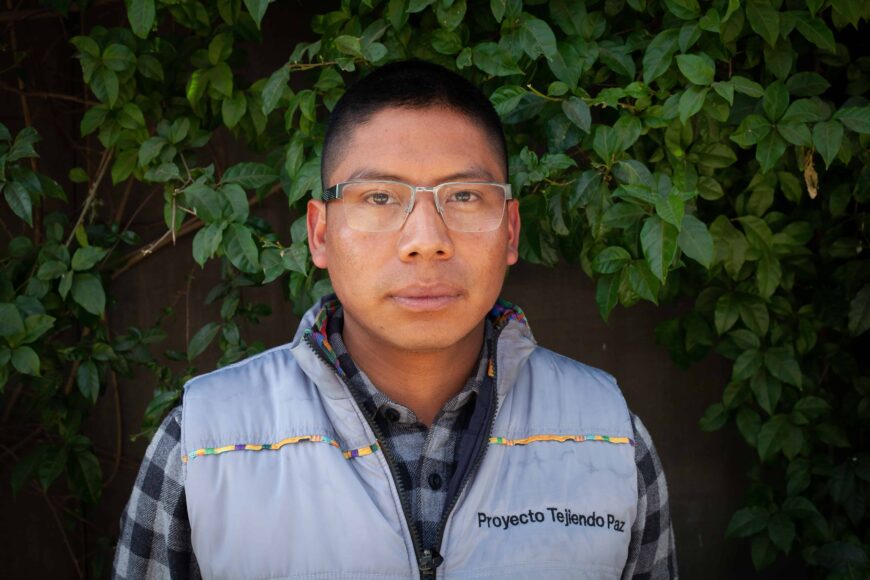
“We break a barrier by speaking the native language… we understand the context and the suffering.”
– Estuardo Aguilón
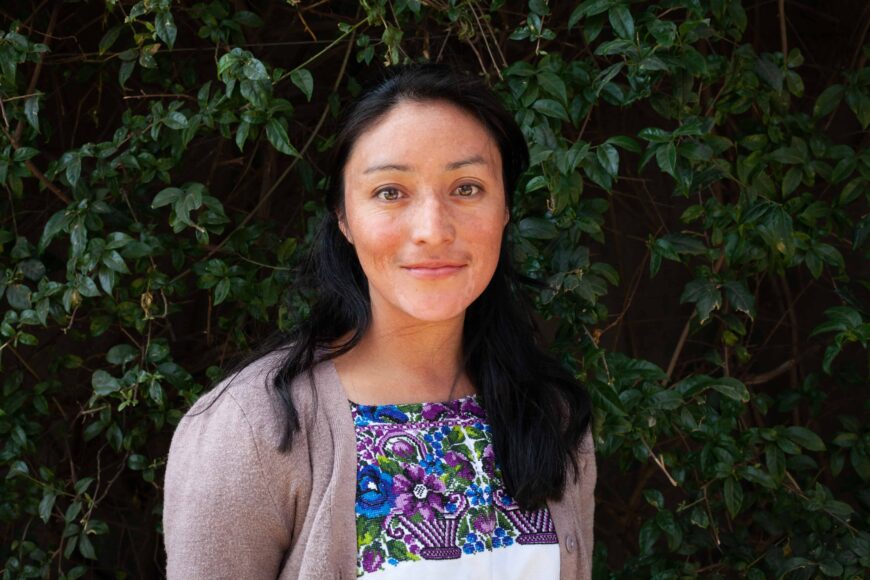
“We want to achieve the objectives stipulated in the project, so that the conflicts we’ve encountered reach solutions. Not just on paper or in words, but we want to put these solutions into practice for positive results.”
–Olga Cutz

“We don’t work with women because it’s in style. No, because it’s urgent, it’s a necessity. There are women living under oppression.”
– María León

“Huehuetenango was an area badly hit by the conflict. The conflict has already passed, the peace agreements were formed… but the reality of the population has not changed. They remain in the same poverty, continue to suffer from the same mistreatment, underdevelopment and the same marginalization. The worst thing is that they left them a legacy of violence. But we believe we have the opportunity in our hands to change this mentality of violence.”
– Carlos Pinto
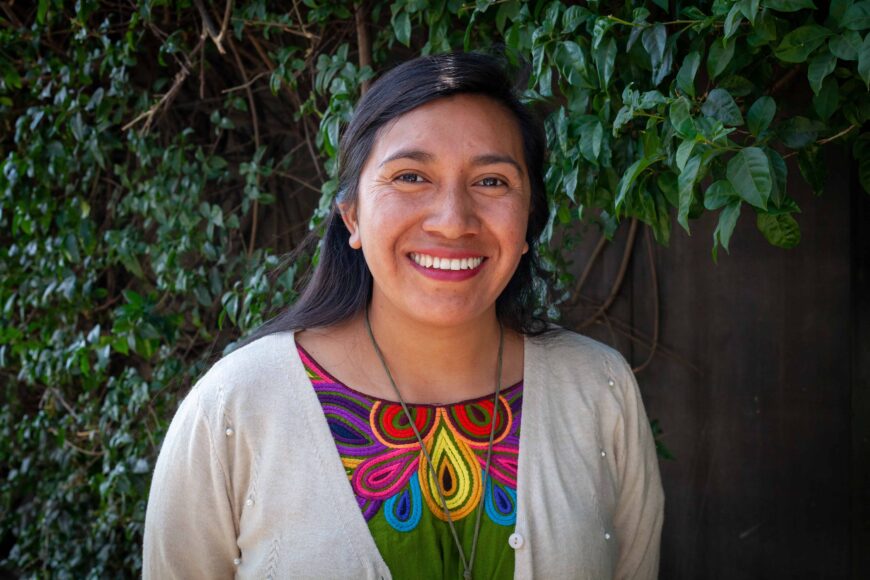
“For me this is important first because I am a young indigenous woman who has had opportunities to work and study, and this has motivated me to bring the same for other women and for other young people… when they see another person of the same age they start to get involved and it becomes motivation for them.”
– Mariela Tax
El Salvador: La Factoría Ciudadana
.In San Salvador, an organization called La Factoría Ciudadana, or the “Citizen Factory,” is giving former convicts, migrants and drug addicts a second chance. Built on the philosophy that restoring a person’s agency and sense of belonging in his or her country can transform not only the individual but also society, the Factoría offers a host of services from tattoo removal to therapy.
The Factoría Ciudadana was initially funded by the U.S. Agency for International Development’s Crime and Violence Prevention Project.
Faith, a bakery and second chances for ex-gang members
.A church in San Salvador opens its doors to men leaving prisons.
“Reintegration is nothing more than giving an opportunity to someone who no one else wants to help,” says Pastor Nelson Moz, referring to the ex-gang members his ministry works with. Committed to halting the cycles of violence that plague his church’s community, Pastor Moz started Huellas de Esperanza, a home for men leaving prison who need a place to start.
Creative Associates International’s Crime and Violence Prevention Project offered technical support and sponsored several programs for Huellas de Esperanza. CVPP is a U.S. Agency for International Development-funded project.
Violence against women and girls and COVID-19 in Guatemala’s Western Highlands
.In an ongoing series of informal discussions between Creative’s experts and field staff, Chief of Party Sara Barker of the USAID-funded Guatemala Peacebuilding Project and gender specialist Rebecca Sewall discuss COVID-19’s impact on women in rural communities. Covering the rise in cases of domestic abuse to the role of indigenous authorities in promoting social cohesion, Barker highlights how the pandemic has given the project an even greater role in addressing one of the country’s most pressing issues.
This installment also features the voices of several indigenous women who were recorded in panels hosted by the Peacebuilding Project.
About the Project
The Peacebuilding Project, known as Proyecto Tejiendo Paz in Spanish, will work in 130 communities in the Western Highland departments of Huehuetenago, Quiché, San Marcos and Totonicapán to support peace initiatives.
The five-year project is funded by the U.S. Agency for International Development and is implemented by Creative Associates International with partners Fundación ProPaz and PartnersGlobal.
Proyecto Tejiendo Paz will focus on conflict dynamics as they pertain to girls, youth and families, governance, land, and natural resources.
With support from project-trained conflict mediators and community facilitators, these communities will engage councils of elders, healers, women’s groups, youth organizations and other key players to identify causes of these types of conflict, carry out action plans to mitigate them and resolve existing disputes.
Communities will develop their own “community vision,” with input from focus groups and larger public forums and inclusive of often-marginalized groups like women and youth. These long-term action plans provide a road map for communities to build resilience and address conflict using a combination of existing community assets and new tools and ideas relevant to their needs and context.